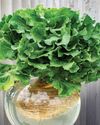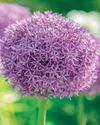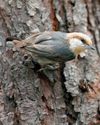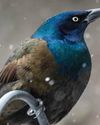Discover the fascinating ways birds survivethrough sight, sound, taste, touch and smell.

FINCHES, SPARROWS AND CARDINALS are happily filling up at your backyard feeders. All of a sudden, they quickly fly away, diving into the bushes. Less than a minute later, a hawk swoops through the yard. How did the songbirds know the hawk was coming? Did they smell, or maybe hear, it? To figure this out, it helps to know more about the senses that birds use to experience the world around them.
Bird’s-Eye View
The term “eagle-eyed” for sharp vision is no accident. Nearly all birds see at least two or three times as much detail as humans, making them able to spot food— or approaching predators—that much farther away. Most birds have excellent color vision, too. Night birds like owls may have a biological trade-off: They see very well in dim light, but their perception of colors may not be as good.
Another advantage birds have is seeing ultraviolet light. To humans, male and female northern mockingbirds look exactly the same—but birds are able to tell the difference because the two have different ultraviolet markings.
Because their eyes are on the sides of their heads, most birds take in two separate pictures of their world, one on each side, with only a limited area of twoeyed vision toward the front. That means while they see lots of detail, it is harder for them to judge distance on the sides until they move their heads.
Denne historien er fra October/November 2018-utgaven av Birds & Bloom.
Start din 7-dagers gratis prøveperiode på Magzter GOLD for å få tilgang til tusenvis av utvalgte premiumhistorier og 9000+ magasiner og aviser.
Allerede abonnent ? Logg på
Denne historien er fra October/November 2018-utgaven av Birds & Bloom.
Start din 7-dagers gratis prøveperiode på Magzter GOLD for å få tilgang til tusenvis av utvalgte premiumhistorier og 9000+ magasiner og aviser.
Allerede abonnent? Logg på

Basics of Hydroponics
Use these top tips and plant picks to have a successful soil-free garden

Rooted in Resilience
These hardy perennials will thrive in most zones

Social and Supportive
Brown-headed nuthatches take a helpful approach to raising their young

All About Owl Pellets
And why you should give a hoot about them

Ask the Experts
Advice from our pros about houseplants, bird feeding and more

BRING THE OUTDOORS IN
Making a terrarium is about as close as you can get to a Zen DIY project. Once you have gathered the proper materials and squared away your plant selections, it's as simple as layering it all together and watching your mini ecosystem thrive. Here, I'll walk you through my foolproof process and cover all the required elements for good filtration, healthy soil, strong root growth and resistance against fungus and disease.

GROW THIS. NOT THAT
Six easy-to-grow houseplants—and six that may not be the right choice for you

Winter MAGIC
Forecasts may be frigid, but grab your binoculars because birding opportunities are still incredible

Sense or Nonsense? - Why some birds can taste and smell - but others can't
Does a porcelain berry taste like a blueberry to a gray catbird? Does a block of lard smell like frying bacon to a northern flicker? The short answer is no. While some avian species do have a well-adapted sense of taste or smell, they can't distinguish between flavors and odors the way humans can. They're not picking up every ingredient in the suet you put out, says José Ramírez-Garofalo, an ornithology researcher at Rutgers University in New Jersey and the director of Freshkills Biological Station in Staten Island, New York.

Maple Mania - Amazing facts about this fall foliage mainstay
Amazing facts about this fall foliage mainstay